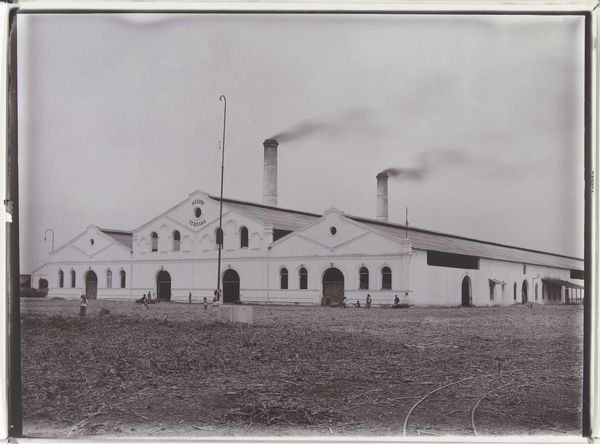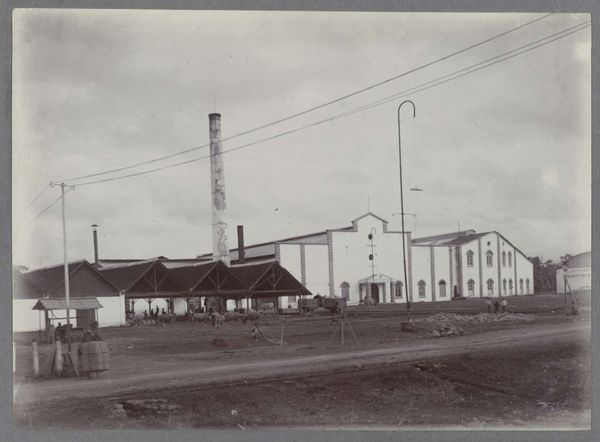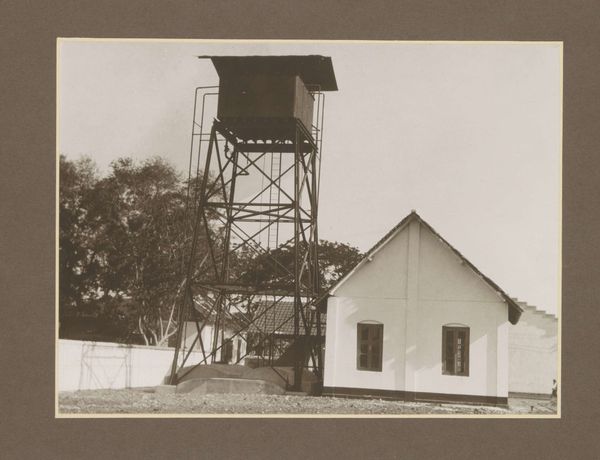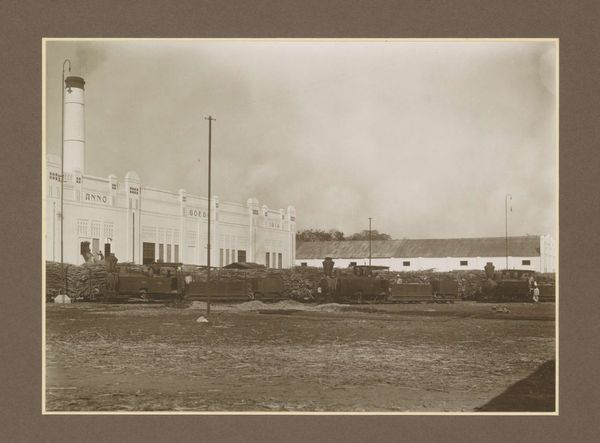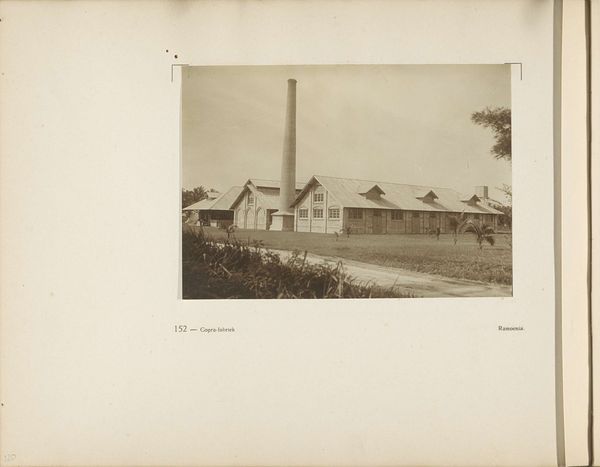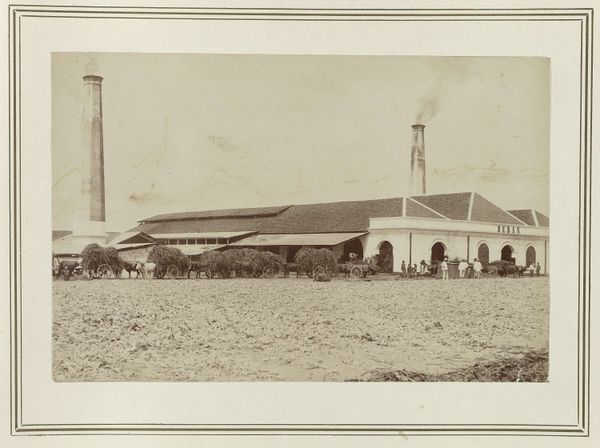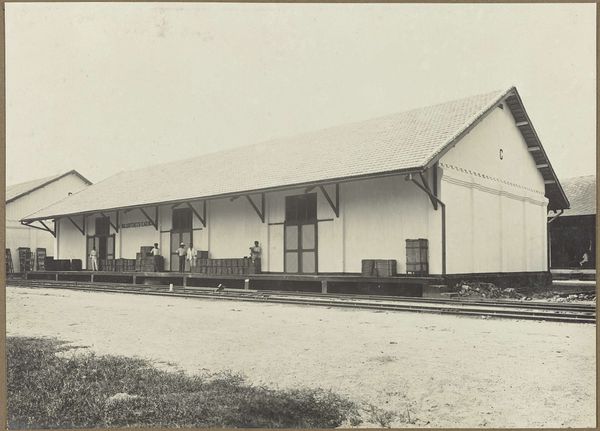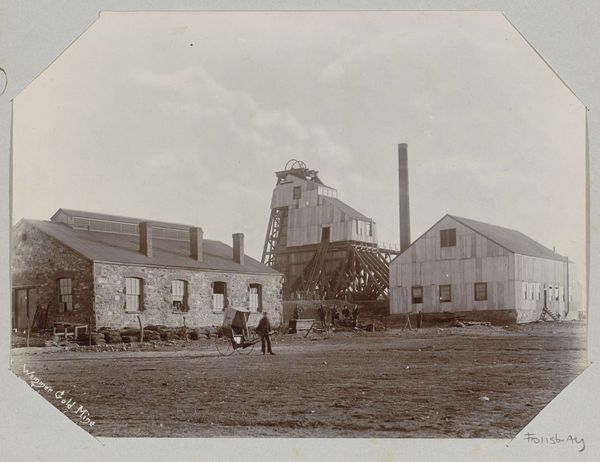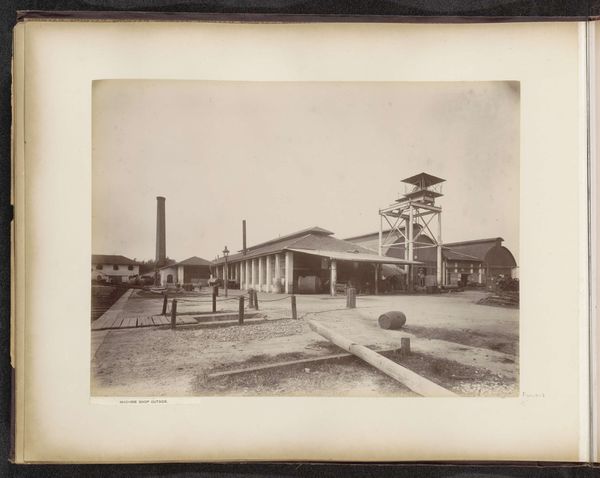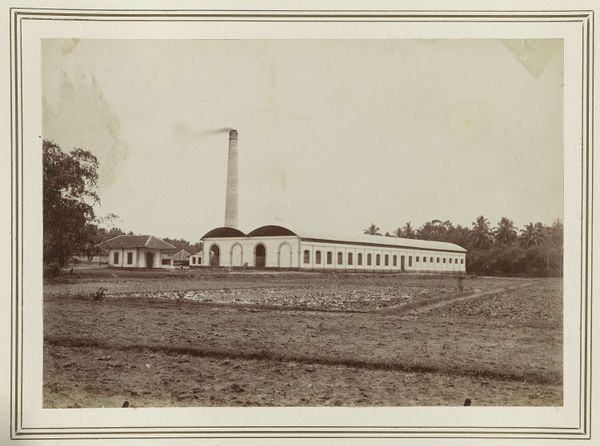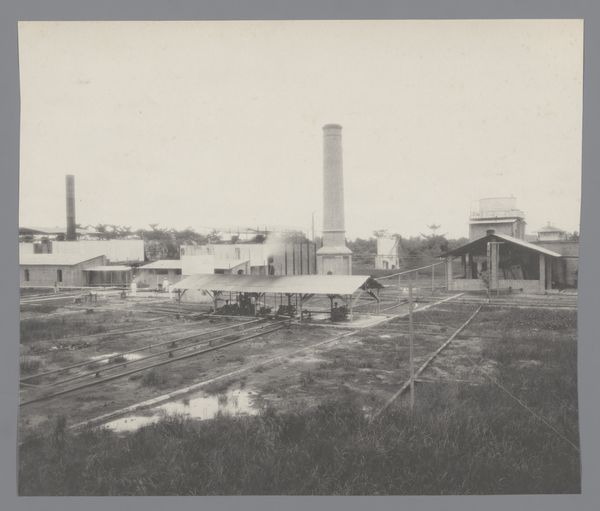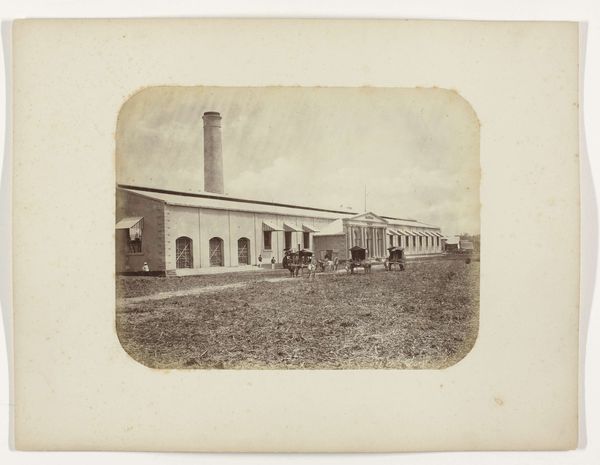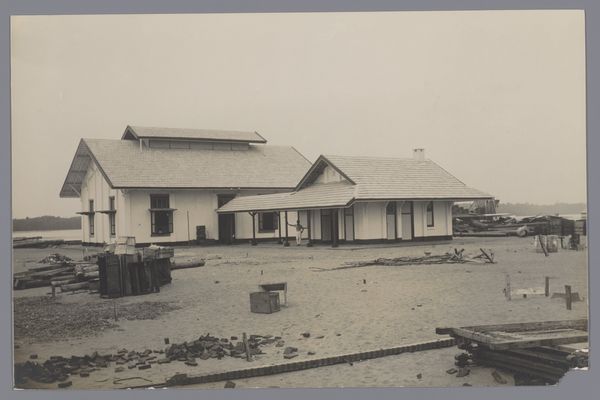
photography
#
photography
#
orientalism
#
cityscape
#
building
Dimensions: height 297 mm, width 450 mm
Copyright: Rijks Museum: Open Domain
Curator: Here we have a photograph titled "Voorzijde met opschrift van suikerfabriek Ngandjoek op Java," or "Front with inscription of the Ngandjoek sugar factory in Java." It is dated from about 1925 to 1930 and is attributed to Isken. Editor: It’s so stark. The geometry of the factory building is almost severe. The sharp lines and repeated window shapes give it a rigorous, almost sterile feeling despite the plume of smoke suggesting ongoing activity. Curator: That starkness, I think, reflects the Dutch colonial presence in Java at the time. These factories were not simply about sugar production, but symbols of economic control and modernization imposed upon the landscape and the local population. Editor: The way the photographer frames the factory, it feels isolated, monumental even. It's certainly the dominant form, made all the more so through light and shadow. Notice how the light falls so cleanly on the facade. Curator: Precisely. The very choice to depict the frontispiece—the inscribed facade—highlights that power dynamic. What's written above the door serves to legitimize its presence and purpose. It’s a statement about progress and authority, constructed through photographic means. Editor: And the composition reinforces that, doesn’t it? The off-centered perspective with the open foreground creates a sense of space, but a space defined by and leading toward that central, industrial mass. I almost feel as if it is meant to show not what they produce but how. Curator: The industrial facilities imposed significant social costs too. It is crucial to look past the purely aesthetic or technical to confront the legacy and implications of colonialism that the image quietly communicates. Editor: It’s definitely more than a cityscape. The photograph’s visual arrangement, with those stark lines, that insistent frontal view, works to amplify a particular message, doesn’t it? Curator: Yes, thinking about it I see the value in reconsidering whose narrative is represented through such works of art. Editor: The experience prompts one to think critically about the relationship between industry, aesthetics, and power as expressed in the image.
Comments
No comments
Be the first to comment and join the conversation on the ultimate creative platform.
